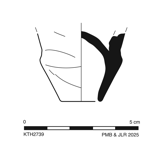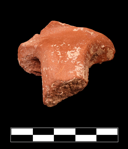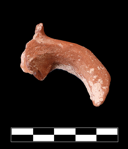- Late Roman Amphora 3 [permalink]
- Type
- Typology Item
- Not after (date)
- 650
- Not before (date)
- 390
- See also
- http://archaeologydataservice.ac.uk/archives/view/amphora_ahrb_2005/details.cfm?id=240
- Broader
- Amphora
- Typological identification comment
- Also known as Benghazi LRA10, Keay 54 bis, Kuzmanov 7, Peacock & Williams Class 45, Scorpan 5, and Zeest 95.
- Bibliography
- EphesosXV.1, pp. 164-167, Type 55
- Bibliography
- Pieri2005, pp. 94-101
- Description
- This small Late Antique form made in western Asia Minor is the successor to the earlier one-handled “Micaceous Water Jar” and Middle Roman Amphora 3. Distinguished by its thin walls that show wide, spiralling ridges and by its micaceous brown fabric, with a smooth, even soapy surface texture. The form displays a shift over time from one to two handles and from a hollow to a closed spike.
- Has geographic origin
- Asia Minor
- Belongs to Historical Period
- Early Byzantine (Historical Period)
- Belongs to Historical Period
- Late Roman (Historical Period)































































